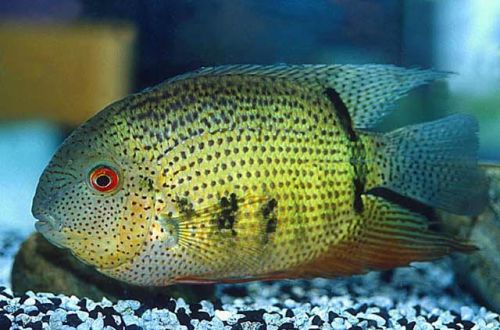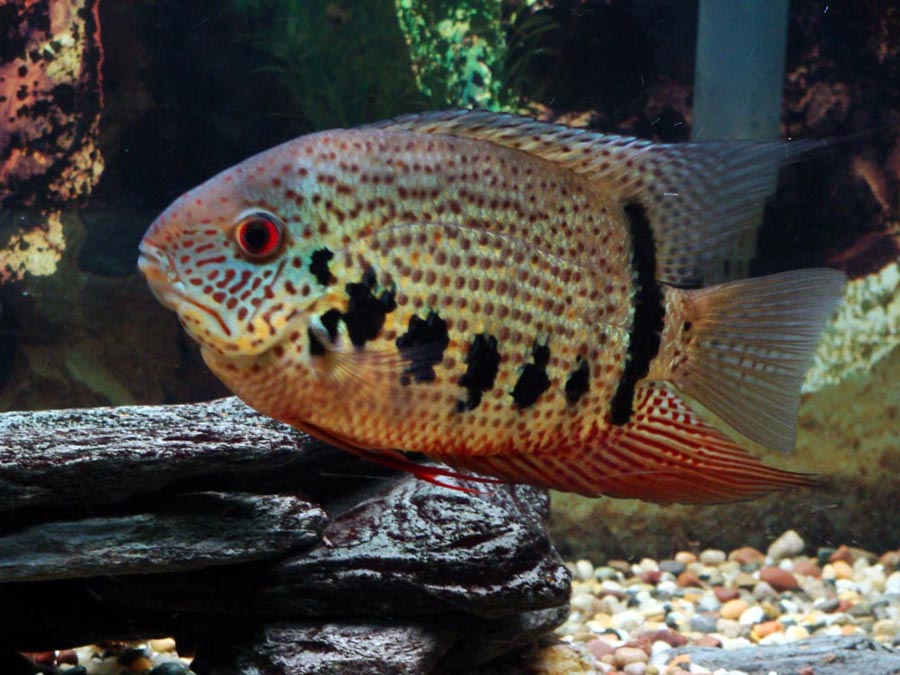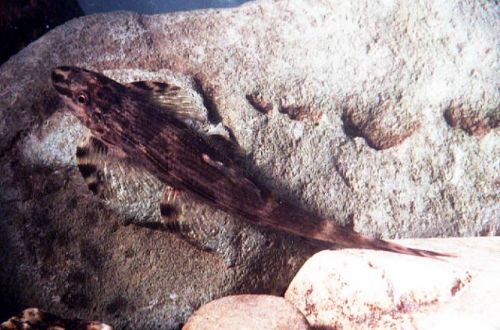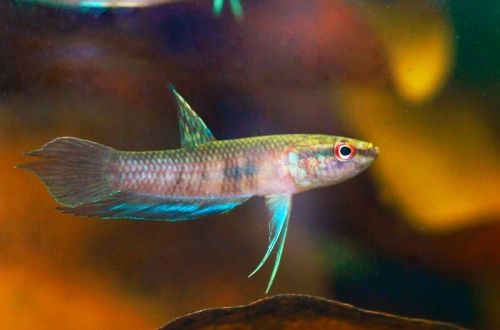
Severum Notatus
Cichlazoma Severum Notatus, scientific name Heros notatus, belongs to the Cichlidae family. A beautiful large fish that has many advantages that are valuable in amateur aquariums, namely: endurance, unpretentiousness in maintenance, omnivorousness, peacefulness and compatibility with many other species. The only drawback is the size of adults and, accordingly, the need for a fairly large tank.

Contents
Habitat
It comes from the Rio Negro basin in Brazil – the largest left tributary of the Amazon. A characteristic feature of the river is a rich brown color due to the large amount of dissolved tannins that enter the water as a result of the decomposition of organic matter. This species is found both in the main channel and in numerous tributaries, mainly keeps close to the coast among the submerged roots and branches of tropical trees.
Brief information:
- The volume of the aquarium – from 250 liters.
- Temperature – 22-29°C
- Value pH — 6.0–7.0
- Water hardness – soft (1-10 dGH)
- Substrate type – sandy
- Lighting – any
- Brackish water – no
- Water movement – light or moderate
- The size of the fish is 20–25 cm.
- Meals – any
- Temperament – peaceful
- Keeping in a group of 3-4 individuals
Description

Adult individuals reach a length of up to 30 cm, however, in an aquarium they rarely exceed 25 cm. The fish have a high, laterally flattened body of a rounded shape. Males have more elongated and pointed dorsal and anal fins, there are red specks on a bluish-yellow background in color, in females they are dark. A common pattern for both sexes is large black spots on the abdomen and a curved vertical stripe at the base of the tail.
Food
Accepts almost all types of feed: dry, frozen, live and vegetable supplements. The diet directly affects the color of the fish, so it is advisable to combine several products, for example, pieces of shrimp or white fish meat with blanched greens (peas, spinach), spirulina flakes. An excellent option can be a specialized food for South American cichlids, produced by many well-known manufacturers.
Maintenance and care, arrangement of the aquarium
The minimum volume of the tank for one fish starts from 250 liters. The design is quite simple, they usually use a sandy substrate, large snags, artificial or live plants. The level of illumination is not critical for Cichlazoma Severum Notatus and is adjusted to the needs of plants or the desire of the aquarist.
Aquatic conditions have slightly acidic mild pH and dGH values. To make it more natural, you can add a few tree leaves, Indian almond sprigs, or a few drops of tannin essence to the aquarium to give the water a “tea” tint.
The leaves of trees are pre-dried before use, for example, in the old fashioned way between the pages of a book. Then they are soaked for several days until they begin to sink, and only then are added to the aquarium. Updated every few weeks. In the case of Indian almonds and essence, follow the instructions on the labels.
Behavior and Compatibility
Relatively peaceful species, males can occasionally arrange skirmishes with each other, but mainly during the mating season. Otherwise, they are quite calm about relatives, including close relatives of Cichlazoma Severum Efasciatus and can be kept in common small groups. No problems noted with other fish, as long as they are not too small to be an occasional meal. As neighbors, it is desirable to use species similar in size and temperament from a similar habitat.
Breeding / breeding
Fish form pairs, while being quite picky about the choice of a partner, and not every male and female can give birth. Chances will increase if you get young cichlazoms that will grow together and naturally form at least one pair. But this option is not suitable for a home aquarium, as it requires a huge tank.
This species, like many other cichlids, is distinguished by caring for offspring. Eggs are deposited on any flat surface or a shallow hole and fertilized, then the parents jointly protect the clutch from the encroachments of other fish. The fry appear after only 2-3 days and also do not go unnoticed, continuing to be close to one of the parents, and in case of danger they take refuge in his mouth – this is an original evolutionary developed defense mechanism.
Fish diseases
The main cause of most diseases is unsuitable living conditions and poor-quality food. If the first symptoms are detected, you should check the water parameters and the presence of high concentrations of hazardous substances (ammonia, nitrites, nitrates, etc.), if necessary, bring the indicators back to normal and only then proceed with treatment. Read more about symptoms and treatments in the Aquarium Fish Diseases section.





